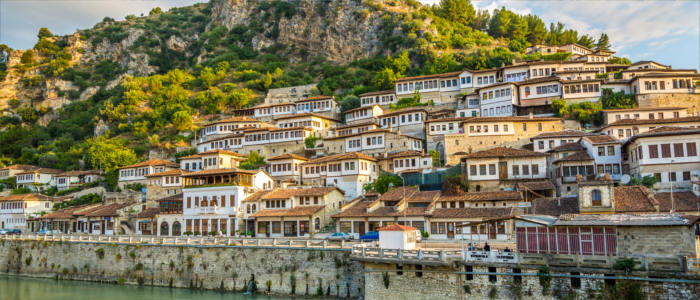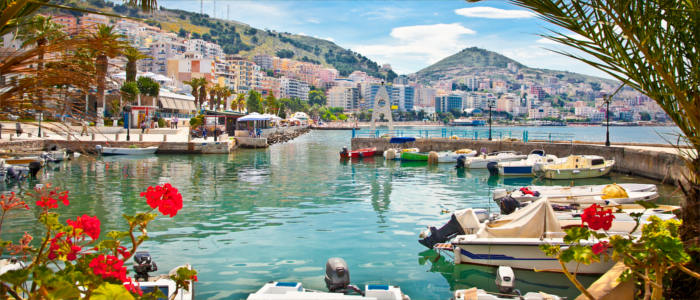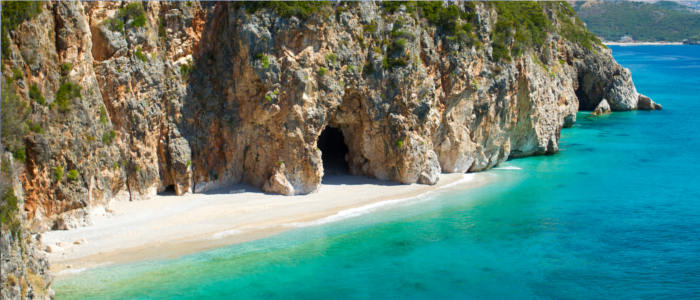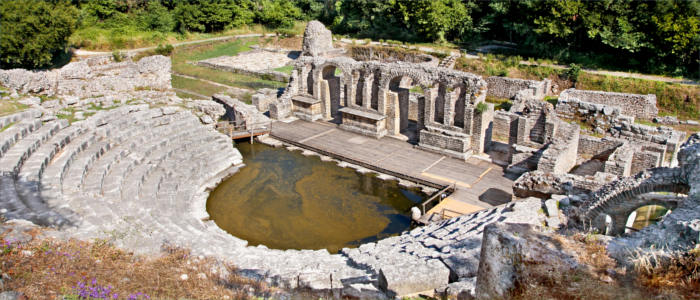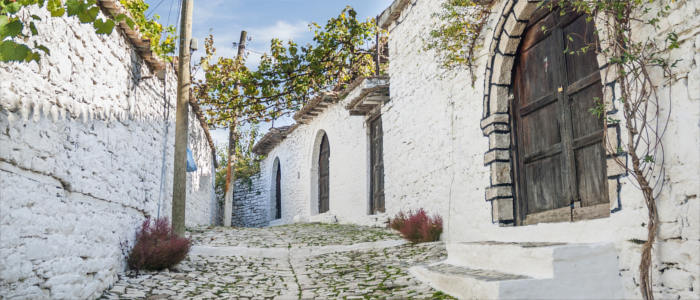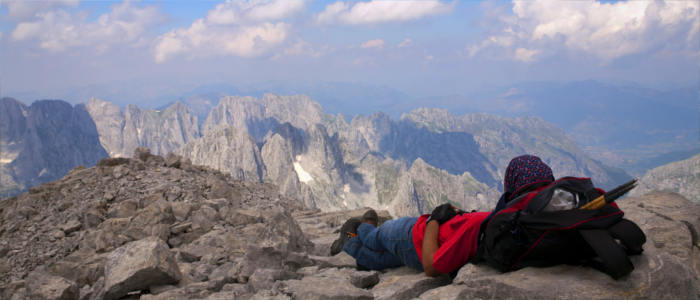Long underrated and finally recognized - Albania is one of the most beautiful travel destinations in south-eastern
Europe. A wild and romantic natural landscape, countless ancient cultural sites and the touch of the Mediterranean climate make the country at the
Adriatic Sea increasingly popular.
Geography - 300 sunny days in Albania
The idyllic country of Albania lies on the Balkan Peninsula between Montenegro and Kosovo, Macedonia and
Greece. In addition, the south-eastern European country is enclosed by the Adriatic and the Ionian Sea. It is divided into twelve qarks (prefectures) and the capital of Tirana. Besides Tirana, popular travel destinations are Sarandë at the Ionian Sea as well as Vlorë and Durrës at the Adriatic coast. Albania prides itself on having no less than 300 sunny days per year. The climate is warm and it only gets colder in winter. July is the warmest month with an average temperature of 24 °C.
Nature - Wild beauty
From the sea to the high peaks of the mountains, Albania fascinates with wild natural beauty. Untouched sandy and pebble beaches at the coast, which is 362 km long, secret lagoons, juicy valleys and the fertile hilly landscape extend in front of the panorama of the breathtaking Albanian Alps. Most travellers are overwhelmed by the unspoiled and diverse variety of landscapes. The country is still an insider tip and surprises many holidaymakers. With regard to natural diversity alone, Albania has a lot to offer. It lies in the center of the Blue Heart of Europe and has a great share in the European Green Belt. You see palms, orange trees, almond trees, laurels, pines and olive trees between the oak forests, which create the country's Mediterranean charm. The forests are home to wolves, lynxes, deer and kites and you can watch loggerhead sea turtles at the coasts. Furthermore, countless migrating birds come to the island every year. Besides the attractive coast, the deep blue mountain lakes and the vast river landscape, Albania impresses with its Alpine landscape. Its highest peak is Mount Korab with a height of 2,764 metres.
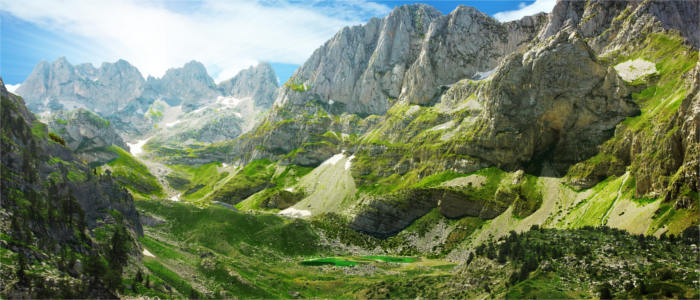
Natural sights - Secret beaches and untouched national parks
One of Albania's greatest attractions is without doubt the Albanian Riviera. This harsh but magical cliff coast, which is waiting to be discovered, is located at the coast of the Adriatic Sea. Numerous holidaymakers visit the wonderful beaches at the Adriatic Sea and enjoy the crystal clear water, especially in the warm summer months. Despite this, the beach sections are not overcrowded and you will easily find a cosy spot to have to yourself. Nevertheless, the coastal towns have adjusted to tourism and offer everything travellers could desire. There are over a dozen spectacular national parks, some of which have hardly been developed. In the Theth National Park in the far north, visitors can explore the steep mountains and the Grunas Waterfall along exciting hiking routes.
Culture - A top travel destination catches up
Albania's history dates back to the Illyrians. For a long time, the region was part of the Ottoman Empire. Many inhabitants of Albania are Muslims to the present day and you see Muslim buildings and mosques all over the country. Albania is generally rich in history with many traditions and a wide range of cultural sites and activities, which is becoming increasingly interesting for tourists. The latter is a rather new development. Albania only gained the possibility to develop with regard to many areas including tourism after the Communist regime had been brought down in 1990. Up to that point, the country was nearly inaccessible to visitors. Albania's efforts to catch up in this sector soon proved fruitful and the number of people who visit the attractive travel destination increases every year. It was recently added to the top list of the best travel destinations worldwide by the New York Times. Travellers especially value its numerous ancient buildings, the incredibly wild and romantic nature and the charming inhabitants.
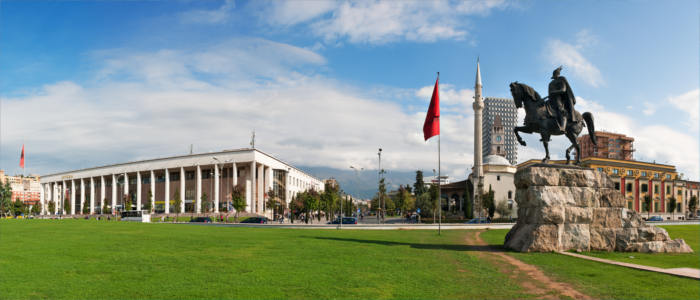
Cultural sights - 1,000 windows and invaluable cultural assets
The colourful capital of Tirana is only 30 kilometres away from the sea and offers a variety of appealing sights. Travellers particularly enjoy the coastal towns. The placid city of Vlorë is a popular bathing resort in summer and impresses with its wonderful Kaninë Castle. The Mediterranean bathing resorts of Sarandë is equally popular. Due to its countless small alleys and winding paths, the city of Korçë is also called the "
Paris of Albania". Other impressive sights are the ruins of the ancient city of Apollonia, which had over 60,000 inhabitants during its time of prosperity. Near the seaport city of Durrës, you see the ruin of an ancient amphitheatre. The ruins of Butrint and the "Town of a Thousand Windows", Berat, have been declared UNESCO World Cultural Heritage sites. Berat is a Balkan-Ottoman town with a magnificent medieval castle and is frequently visited. The same is true of the medieval Krujë Castle in the city of the same name and the Skanderberg Museum. Travellers who are interested in Venetian architecture should not miss out on Shkodër's old town.
Experience - Between medieval villages and party nights
Albania's Mediterranean Balkan cuisine displays influences from
Turkey, Greece and
Italy. Fish and chicken are popular. Some of the most common dishes are byrek, biftek and lokum. The national drink is rakı. The latter is mostly drunk in the evening hours, when Albania's nightlife starts. Tirana and the well-known coastal towns are vibrant with activity every night. Locals and travelers populate the streets at night in a cheerful and social mood. In some places, roads are closed to car traffic, so that passengers can walk from bar to bar, into the next trendy restaurant or the latest night club. The venues are often opened until the early morning hours and make long party nights possible. During the day, visitors can go for a stroll along the wide boulevards and buy one or two reasonably priced souvenirs. If you do not find anything there, you should visit the bazaar in Krujë. Relaxation is offered by the Turkish bath, which is also located in Krujë.
Activities - Conqueror of the mountains
Climbing and mountaineering in the Albanian Alps is still a real adventure. Some peaks have never been climbed before and are waiting to be conquered. Travelers who want to explore Albania in a more relaxed way can experience the country's natural beauty along scenic hiking routes. Since the tourism sector is only starting to develop in many areas, travelers are often on their own when it comes to organizing their leisure time. One exception is rafting in the Osumi River canyon. Exciting tours are being offered from March to June. In addition, holidaymakers can explore Albania in a cross country vehicle and visit the neighboring countries. The Greek island of
Corfu, for example, is located at the most narrow point of the Ionian Sea and is only two kilometres away from Albania.
Information
Travellers reach Albania by plane or car. In addition, there is a ferry which travels from Italy to Albania. Arriving by train is not possible at the moment. Within the country, you best use the bus network. If you want to drive yourself, you should note that the roads are in a very bad condition in several parts of the country.
Slowly but surely Albania is developing into one of the most beautiful travel destinations in Eastern Europe. Its untouched nature, the wonderful, varied cities and the friendliness of the inhabitants make Albania increasingly popular in the world of travel.



